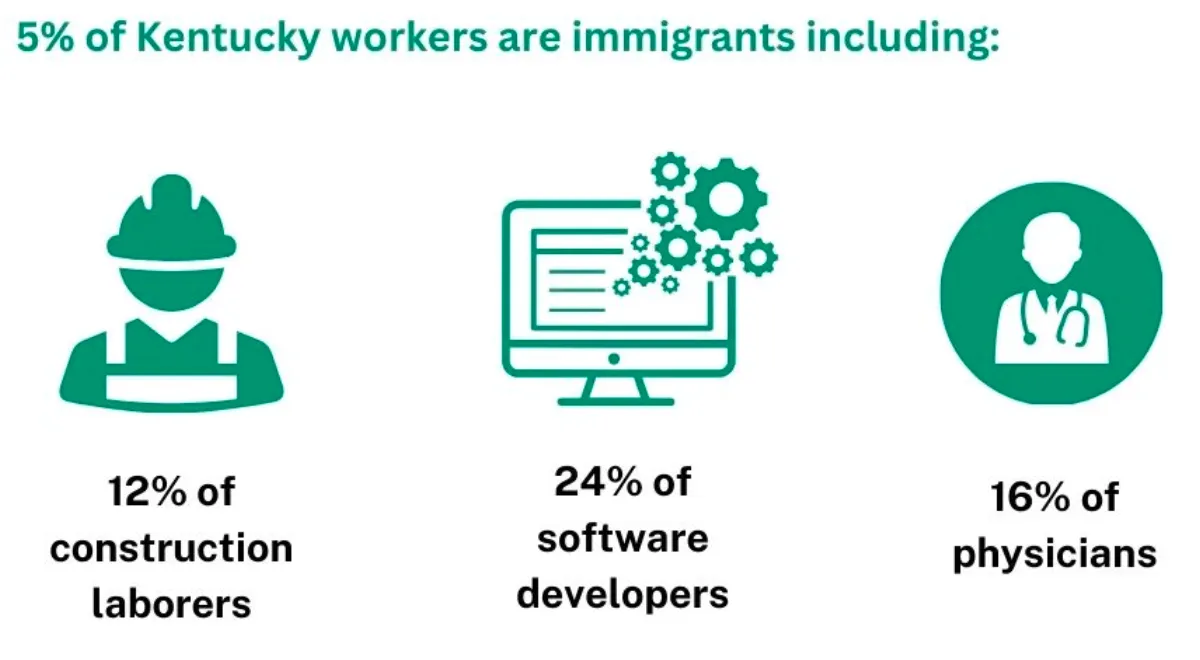Table of Contents
Federal investments have spurred a rapid recovery from the COVID-19 recession in Kentucky, and rules for spending that money combined with growing union activity are creating the potential for better job quality across the commonwealth, according to a new report by the Kentucky Center for Economic Policy (KyPolicy). “The State of Working Kentucky 2024” is an analysis of the economic conditions facing workers across the commonwealth, and is released to coincide with Labor Day.
“This report describes hopeful signs of strong job growth in construction, energy, and other industries, and the potential for an upswing in manufacturing,” said Jason Bailey, executive director of KyPolicy and one of the authors of the report. “New federal laws encourage or require the use of union labor, and Kentucky workers have demonstrated a heightened interest in unions in recent years with growth in union membership and labor actions and an uptick in workers filing for and winning union elections.”
“We’re witnessing an incredible resurgence of energy and unity among unions in Kentucky,” said Ashley Snider, senior campaign lead with the Industrial Division of the Communications Workers of America (IUE-CWA). “Workers are coming together like never before to demand fair wages, better working conditions, and respect on the job.”
Chad Mills, State Director of the Kentucky State Building and Construction Trades Council (KSBCTC), said its affiliates are feeling the momentum, with union construction booming across the state and record growth in its registered apprenticeship programs and organizing efforts. “It’s safe to say our building trades unions are in a great place,” he said. “And while we are very proud of all the hard work our building trades leaders are doing, we all know that there is much more that needs to be done.”
Indeed, as KyPolicy’s report notes, improvements in job quality are needed after decades of stagnant wages for most workers and higher prices that are straining household budgets. Federal stimulus created a tight labor market that has resulted in the first real wage growth for workers at the bottom in Kentucky in many years. But despite that progress, 19% of Kentucky workers still make less than $15 an hour, and the cost of housing, child care, food, medical and other expenses are making it hard for many to make ends meet.
Increasingly, more of those workers are taking action to make their jobs better. "We have many unions on strike across Kentucky right now,” said Dustin Reinstedler, president of the Kentucky AFL-CIO. “Not a single one of them is what you would consider wealthy, nor are they bargaining to become wealthy. The Kentucky worker simply wants their equitable share of what they produce.”

The report also describes the continuing challenge of the lack of jobs in parts of rural and especially eastern Kentucky, and pushes back on false narratives about Kentucky’s labor force participation rate. A full 79% of prime age workers are already in the labor force, and three-fourths of those who are not are caregivers or people who are ill or disabled. The report also describes persistent economic disparities facing Black and immigrant workers and those Kentuckians involved in the criminal legal system.
“The State of Working Kentucky 2024” concludes with policy recommendations:
- Kentucky should allocate more state resources to maximize federal dollars coming to the state, especially for communities that lack adequate job opportunities;
- Encourage, require, and support job quality and unionization through project labor agreements, community benefits agreements, support for apprenticeships and public procurement requirements;
- And do more to address burdensome prices by investing surplus state dollars in needs like affordable housing and child care, and using already-existing resources to lower costs ranging from tax filing fees to medical debt.
“Kentuckians are working hard, but they need the state to do its part and make sure that when infrastructure dollars create jobs, they’re good union jobs,” said Misty Robertson, National Broadband Lead at Communication Workers of America.
Key facts from “The State of Working Kentucky 2024”
Recent job growth is strong
- Kentucky’s economic recovery from the COVID-19 recession has been strong, with 84,800 more jobs now than in February of 2020. At the same point after the Great Recession, the state was still 46,400 jobs shy of pre-recession levels.
- Construction employment has been particularly robust, adding 13,200 or 16% more jobs than pre-COVID, a rate of growth nearly twice the national average.
Labor force participation is also strong, once barriers are considered
- Nearly 80% of Kentucky’s prime age workers are already in the workforce, a number that is rising and near an all-time high.
- Three-fourths of those not in the labor force are caregivers or have an illness or disability.
- Kentucky’s total labor force participation is ranked low compared to other states only because Appalachian eastern Kentucky has very limited job opportunities due to its history of a declining, extractive economy. The rates in the rest of the state are “unremarkable in a national context.”
Wages have grown recently for workers at the bottom, but long-term stagnation, inequities, and the cost of living remain a challenge
- A tight labor market recently has resulted in Kentucky workers at the 10th percentile seeing their wages grow from $9.92 in 2019 to $12.43 in 2023, a rate 5% faster than inflation and the largest increase across the wage spectrum.
- Still, 19% of Kentucky workers made less than $15 an hour in 2023.
- While education is important, most of the projected job openings do not require a college degree and the jobs with the most openings pay relatively little. Also, median pay for college-educated Kentucky workers has been stagnant at about $30 an hour since the early 1990s.
- Racial disparities also persist, with the median Hispanic worker in Kentucky making $17 an hour and the median Black worker making $19.11 compared to $22 for the median white worker. The Black unemployment rate is 11.3% compared to 3.3% for white Kentuckians.
- Though rates of inflation have declined, higher costs compared to 2020 are burdening many workers, including due to a shortage of affordable housing.
Union interest is rising
- Rates of unionization have increased in Kentucky the last two years, while the state has seen an uptick in union election filings, strikes, and other labor actions, and union victories in representation elections.
--30--
Written by Jason Bailey and Dustin Pugel of KyPolicy







